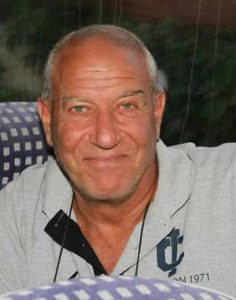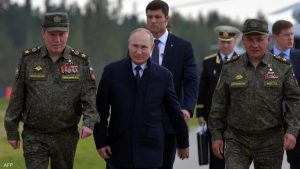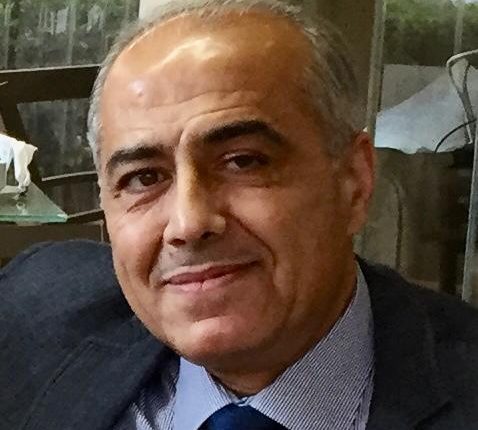UKRAINE’S HOT SPRING
*By General Monzer El Ayoubi
**Translation: Dr Pierre A. Sarkis

The conflict in Ukraine seems ready for a military confrontation between NATO and the United States on one hand, and the Russian Federation on the other. In short, the reality on the theater, the rumbling of weapons on the increase, and the craters abnormally dry, the Ukrainian military bases Poltava and Vasylkiv are experiencing an active movement of C130-Hercules transport aircraft unloading shipments of quality US weapons, most recently last week’s third batch of 90 tons, described by Pentagon services as “lethal security aid” as part of the US military support package planned for last December, to strengthen Ukraine’s defense capabilities.
On the other hand, the Russian Defense Ministry continues to mobilize its forces on the North-Eastern Ukrainian borders where approximately 175000 soldiers forming diverse combat units have been placed in pre-defined locations, allowing them to act “in inclusive manner.” Belarus’ air bases have also been reinforced by advanced 5G SU-57 aircraft with two battalions of the S-400 air defense missile system.
On the strategic front, Russian-Ukrainian tensions cannot be reduced to a dispute over borders or a dispute over interests, as the equation of the security of the Russian Federation and the security guarantees required, are matched by the security of the European Continent. The Russian military build-up with offensive positioning and the decision to invade, will be confronted with NATO forces and harsh Western sanctions.
On the diplomatic front, the dialogue was no less intense, as the exchange of heated statements was not curbed by the three rounds of dialogue in Geneva and Brussels, and lately, with the Organization for Security and Cooperation in Europe (OSCE) in the middle of this month with the aim of defusing the crisis. In addition, the virtual meeting between President Biden and his counterpart Putin was not up to par, for the mutual smiles were cold and the positive statements pro forma, and contradicted US threats to impose severe sanctions if Ukraine was invaded, least of which was targeting the Russian financial system and the closure of Nord Stream 2 pipeline which supplies liquified gas to much of Europe. As such, the US response to the Russian security guarantees paper was timorous, if not negative.
In a related context, Paris succeeded in reactivating the quadripartite committee for dialogue “Russia, Ukraine, Berlin, Paris” which is currently the only channel of communication. If the joint French-German position reflected by the statements of President Emanuel Macron and Chancellor Olaf Shultz added significant positivity on the tense theater, the French President talked about phone discussions with his Russian counterpart on Friday, with the aim of “assessing the overall situation in terms of European security,” he said, adding that he was ready to visit Russia. In parallel, and according to French foreign services, French Foreign Minister Jean-Yves Le Drian is expected to visit Kiev, Ukraine, with his German counterpart Annalena Baerbock, with the aim of “exploring all channels that would push Russia on the path of de-escalation.”
 In the light of the modest Franco-German diplomatic breach of the crisis barrier, the intentions of the Russian Csar are not known to anyone except the Ministers of Defense and Foreign Affairs, the Sergei dual, Shoygu and Lavrov. But surely, the decision to invade presented on the table can be made at any moment and at the right time, without regard to Western warnings, for President Putin rejects the imposition of new strategic and geopolitical balances on the European theater, especially regarding Ukraine joining NATO.
In the light of the modest Franco-German diplomatic breach of the crisis barrier, the intentions of the Russian Csar are not known to anyone except the Ministers of Defense and Foreign Affairs, the Sergei dual, Shoygu and Lavrov. But surely, the decision to invade presented on the table can be made at any moment and at the right time, without regard to Western warnings, for President Putin rejects the imposition of new strategic and geopolitical balances on the European theater, especially regarding Ukraine joining NATO.
According to the phases of the political scene, European understanding and diplomatic mobilization with the purpose of defusing an American-Russian confrontation in the old continent, and by breeding with the military build-up and the realities of the theater, the next Ukrainian Spring is going to be hot. President Putin, and regardless of favorable climatic conditions, considers it to be the end of the negotiating period after all means of dialogue were exhausted, as it is also the most appropriate time to resolve the conflict militarily. It will be according to him the shortest and most cost-efficient way to end the dialectic of useless pointless negotiations, stamped by stalling and distraction.
Finally, political researcher Roland Begamov talks about “exchanging a false comprehension of the intentions of the American and Russian sides” regarding the purposes of the invasion. But things are far beyond, for the crisis has entered into the framework of a correct understanding of the causes, facts and results. There are two options with no third one: either to meet Moscow’s demands for security guarantees, or a military solution. In this sense, and in order to avoid the heated confrontation after President Biden announced the option of deploying US troops in Eastern Europe and the Baltic, European leaders, particularly the French and German are struggling to find a common language to resolve the conflict, away from the American push for military involvement with an unknown end, and the unexpected repercussions aftermath, which Moscow does not mind, provided there is no playing, or betting on the time factor, for what is acceptable before Spring, would not be appropriate after.
Beirut, 28/01/2022
*Scholar in Security and Strategic Affairs
** Specialist in Russian Affairs…

